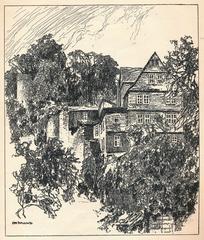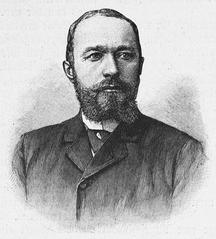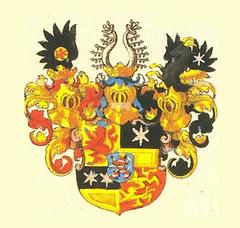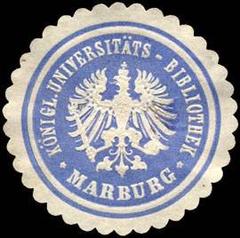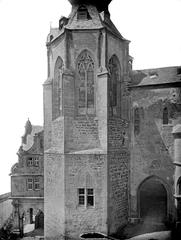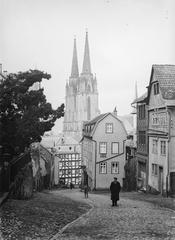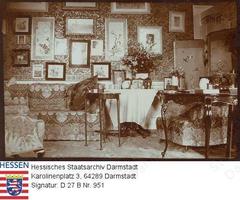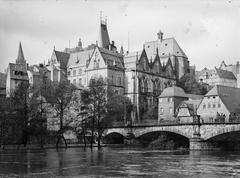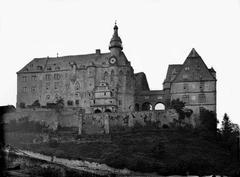Protestant Church Elisabethkirche Marburg: Visiting Hours, Tickets, and Historical Significance
Date: 14/06/2025
Introduction: The Significance of the Elisabethkirche and Marburg’s Protestant Heritage
Nestled in the historic town of Marburg, Germany, the Protestant Church known as Elisabethkirche stands as a remarkable testament to early Gothic architecture and the transformative impact of the Protestant Reformation. Constructed between 1235 and 1283 over the tomb of St. Elizabeth of Hungary, this church has long served as a spiritual beacon, drawing pilgrims and shaping theological discourse—notably as the venue of the 1529 Marburg Colloquy, a pivotal event in Protestant history. Marburg’s legacy is further distinguished by its university, Philipps-Universität Marburg, the world’s oldest Protestant university, founded in 1527 (Marburg Protestant Church Guide; My Faith Journeys; Nomads Travel Guide).
This guide offers a detailed exploration of the historical, architectural, and cultural significance of Marburg’s Protestant churches, focusing on Elisabethkirche and the Lutherische Pfarrkirche St. Marien. It includes essential visitor information—such as opening hours, ticketing, accessibility, and guided tours—alongside expert tips to maximize your experience. Whether your interest lies in history, architecture, faith, or culture, this resource equips you to discover Marburg’s Protestant legacy in depth. Recommendations for planning, nearby attractions, and travel resources are also provided (Marburg Tourism; Triplyzer).
Contents
- Introduction
- Historical Context
- Origins of Marburg and Its Religious Landscape
- The Marburg Colloquy
- Architectural Significance of Elisabethkirche
- Construction and Evolution
- Exterior and Interior Features
- Reformation-Era Changes and Preservation
- Practical Visitor Information
- Visiting Hours, Tickets, and Tours
- Accessibility and Travel Tips
- Visiting Lutherische Pfarrkirche St. Marien
- Highlights, Hours, and Visitor Experience
- Nearby Attractions
- Frequently Asked Questions (FAQ)
- Conclusion and Recommendations
- Sources and Official Links
Historical Context
Origins of Marburg and Its Religious Landscape
Marburg’s recorded history dates to the 8th century, but its religious prominence emerged in the 13th century with the arrival of the Franciscan Order and the construction of the Church of St. Elizabeth. Completed in the 14th century, this church is among Germany’s first fully Gothic structures, becoming a major pilgrimage destination due to the veneration of St. Elizabeth of Hungary.
The Reformation and the Protestant Movement
In the early 16th century, Marburg became a focal point of the Protestant Reformation. Its university, founded in 1527, is recognized as the world’s oldest Protestant institution of higher learning. The Marburg Colloquy of 1529, hosted by Landgrave Philip of Hesse, brought together reformers such as Martin Luther and Ulrich Zwingli to debate key theological issues, especially the nature of the Eucharist. While complete unity was not achieved, the colloquy laid groundwork for future Protestant cooperation (Christian Publishing House – Marburg Colloquy; Encyclopedia.com – Colloquy of Marburg).
Architectural Significance of Elisabethkirche
Construction and Historical Context
The Elisabethkirche was constructed between 1235 and 1283 by the Teutonic Order as a Catholic pilgrimage church for St. Elizabeth of Hungary. Over time, following the Reformation, it became a significant Protestant place of worship, reflecting the region’s religious transformation (My Faith Journeys).
Exterior Features: Gothic Mastery
- Twin Towers: The iconic, symmetrical spires rise to nearly 80 meters, among the earliest fully developed Gothic towers in Germany.
- Western Facade: Adorned with biblical and floral motifs, the facade serves as both architectural marvel and visual sermon.
- Structural Innovations: Built from local sandstone, the church features flying buttresses with carved finials, exemplifying Gothic engineering.
Interior Features: Light and Spirituality
- Nave and Choir: The 30-meter-high nave, ribbed vaults, and slender columns create an impression of vastness and light. The choir houses the ornate shrine of St. Elizabeth.
- Stained Glass: Expansive 13th-century stained-glass windows depict biblical scenes, later adapted to emphasize Protestant themes.
- Artistic Treasures: Medieval choir stalls, a monumental 19th-century organ, and a carved pulpit are notable features.
Reformation-Era Changes and Preservation
After the Reformation, liturgical spaces within the church were simplified, focusing worship on scripture and congregational participation. The church has undergone multiple restoration phases, preserving its dual Catholic-Protestant heritage while maintaining its original Gothic character.
Practical Visitor Information: Elisabethkirche
Visiting Hours
- April to October: Monday to Saturday 9:00 AM – 6:00 PM; Sunday 12:00 PM – 6:00 PM
- November to March: Monday to Saturday 9:00 AM – 4:00 PM; Sunday 12:00 PM – 4:00 PM
Hours may vary for holidays and special events. Check the official website for current information.
Tickets and Admission
- Entrance: Free
- Guided Tours: Available in German and English for groups/individuals (advance booking recommended). Some special exhibitions or tower climbs may carry a fee (~€5 for adults; discounts for students, seniors, and groups).
Accessibility
- Wheelchair Access: Main entrance and restrooms are accessible; ramps and assistance can be arranged.
- Photography: Permitted without flash or tripods in most areas.
Travel Tips
- Arrive early to avoid crowds, especially during weekends and festivals.
- Wear comfortable shoes for exploring the cobbled Old Town.
- Consider combining your visit with guided tours of Marburg University or Marburg Castle.
Visiting Lutherische Pfarrkirche St. Marien: Hours, Highlights, and Visitor Experience
Location and Accessibility
Situated in Marburg’s Altstadt, the Lutherische Pfarrkirche St. Marien is a short walk from the Marktplatz and other major landmarks. The church is accessible by public transport and surrounded by picturesque medieval streets (Triplyzer).
Visiting Hours and Admission
- Opening Hours: Generally 10:00 AM – 6:00 PM (may vary seasonally or for church events).
- Admission: Free; donations are appreciated.
- Guided Tours: Occasionally available, especially for groups and during special events. Confirm details in advance with the church or tourism office.
Architectural and Artistic Features
- Gothic Design: Notable for vaulted ceilings, pointed arches, flying buttresses, and tall stained-glass windows (Triplyzer).
- Stained Glass: Medieval and restored windows portray biblical scenes.
- Wilhelm Sauer Organ: Installed in 1903, this grand organ boasts 97 stops and nearly 6,700 pipes, hosting regular recitals.
- Artworks: Includes the triptych altar by Jan van Scorel, fifteenth-century wooden sculptures, and a modernist crucifix by Ernst Barlach (Trip101).
- Tower Climb: Offers panoramic views of the city for those willing to take on the spiral staircase.
Events and Special Experiences
- Regular church services, concerts, and recitals, particularly during major Christian festivals.
- Special tours and educational programs can be booked via the local tourism office.
Visitor Etiquette and Accessibility
- Dress modestly and respect the church’s active worship status.
- Main nave and chapels are accessible; some areas such as the tower may not be suitable for visitors with mobility challenges.
Nearby Attractions
Enhance your visit by exploring:
- Marburg Castle: Historical exhibitions and city views (Eupedia).
- Old Town (Altstadt): Scenic streets with shops, cafes, and medieval architecture.
- Elisabethkirche: A short walk away, offering a complementary experience of Marburg’s religious history.
Frequently Asked Questions (FAQ)
Q: What are the Elisabethkirche visiting hours?
A: April–October: Mon–Sat 9:00 AM–6:00 PM, Sun 12:00 PM–6:00 PM; November–March: Mon–Sat 9:00 AM–4:00 PM, Sun 12:00 PM–4:00 PM.
Q: Is entry to the Elisabethkirche free?
A: Yes, admission is free. Guided tours and special exhibitions may require a ticket.
Q: Are the churches accessible?
A: Main areas are accessible; contact staff for assistance if needed.
Q: Are guided tours available?
A: Yes, in multiple languages; advance booking is recommended.
Q: Can I take photographs inside?
A: Yes, without flash or tripods.
Q: What other attractions are nearby?
A: Marburg Castle, the Old Town, and local museums.
Conclusion and Recommendations
A visit to Marburg’s Protestant churches—especially the Elisabethkirche and Lutherische Pfarrkirche St. Marien—offers a captivating journey through centuries of religious, architectural, and cultural history. These sites invite reflection on the enduring legacy of St. Elizabeth, the theological ferment of the Reformation, and the vibrant life of contemporary Marburg. With accessible visiting hours, affordable or free entry, and engaging guided tours, these churches are welcoming to all.
To make the most of your visit:
- Consult official websites for the latest information on hours and events.
- Consider guided tours for deeper insight.
- Explore nearby attractions such as Marburg Castle and the Old Town.
- Use resources like the Audiala app for audio guides, virtual tours, and updates on cultural events.
Whether you seek inspiration in soaring Gothic spires, wish to trace the footsteps of reformers, or simply want to enjoy the serene beauty of these spaces, Marburg’s Protestant churches stand ready to enrich your journey (Elisabethkirche Official Site; DW; Marburg Tourism).
Sources and Official Links
- German Sights – Marburg
- My Faith Journeys – Reformation Tour Germany
- Nomads Travel Guide – St. Elizabeth’s Church, Marburg
- Triplyzer – Things to Do in Marburg
- Marburg Tourism Official Website
- DW Tour through Luther’s Marburg
- Trip101 – Best Things to Do in Marburg, Germany
- Eupedia – Marburg Travel Guide
